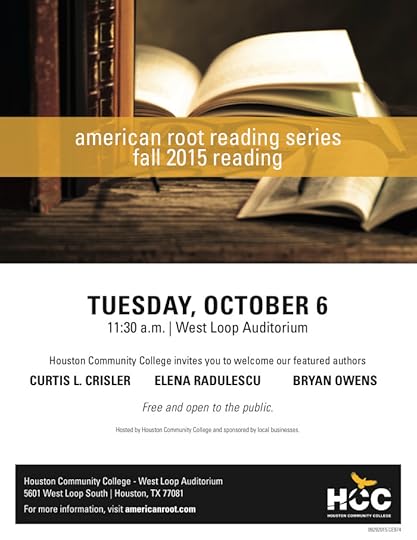Monica Shaughnessy's Blog, page 2
November 30, 2015
The Post-NaNoWriMo Freak-Out
 “The End” you type with satisfaction. You sit back in your chair at Starbucks, glowing with the pride of completion. You’ve just finished a literary marathon, and for that, you are a god. SACRAMENTAL SCREAM (working title) is destined to be a classic. You order a second latte and a scone. Why not? You’ve earned it, baby.
“The End” you type with satisfaction. You sit back in your chair at Starbucks, glowing with the pride of completion. You’ve just finished a literary marathon, and for that, you are a god. SACRAMENTAL SCREAM (working title) is destined to be a classic. You order a second latte and a scone. Why not? You’ve earned it, baby.
The next day, you roll out of bed eager to read your masterpiece. As the laptop boots up, you brew a pot of coffee and dream about your book, SACRAMENTAL SCARE (working title), sitting face-out on a Barnes & Noble shelf. In a month, two at the outside, you’ll have a book deal. No, no. You’re not expecting a six figure advance. You’ll be happy with 50k. That’s very, very reasonable you think as you pour yourself a cup of brew.
Seated at the kitchen table, you scroll through the first few chapters and… Wait, you don’t remember writing some of this. “She took him by the hand. She leads him to the church on the mountaintop. They arrived after several days of climbing, and their tired. Very tired. Very, very tired.” You scratch your head. Ah! Some of these passages were written at 2 a.m., and you were half asleep. You shrug it off and continue reading. Brilliant, especially the part about the flesh-eating nuns who feast their way through the orphanage.
Hard work begins mid-week. You must edit SACRAMENTAL SAVEUR (working title). Everyone tells you that you must edit. You don’t really see why since you meant EVERY WORD. Still, you suspect that there are a few things that need polishing. Even Hemingway needed an editor, you tell yourself. You run your manuscript through spell and grammar check and find 5,329 mistakes. You accept all. Done. Time for a cappuccino.
A few days later, you print several copies of SACRAMENTAL SACRAMENT (working title)–one for your wife, one for Grandma Jenske in the nursing home, and one for the barista at Starbucks (whom with you’re now quite familiar). You’ve been talking so much about your new book that they’ve all agreed to be your first readers. Eager readers, you hope as you hand them out.
Days pass.
Weeks pass.
You finally break down and ask your wife what she thinks of SACRAMENTAL SAVAGES (working title). You haven’t seen the manuscript lately, and you’re certain she took it to work to read during her lunch hour.
“Oh, your manuscript,” she says with hesitation. “I kind of ran out of paper. And since you only used one side, you left a perfectly good side for me to print out my monthly report. But if it’s any consolation, Accounting loved chapter thirty-two.”
“Chapter thirty-two?” You rub your chin and picture yourself in a smoking jacket. “Ah, the chapter where the main character suspects the church of wrongdoing. Good writing. Good stuff. You want me to print you another copy?”
“No! I-I mean…no. I loved it, dear. Really.”
This conversation has distracted you from your true fan, Grandma Jenske. You pick up the phone and dial. “Clara Jenske, please,” you say to the desk clerk at the nursing home.
“Sir, she passed away last week. I’m very sorry.”
You give a heartfelt sigh. “How did she die?”
“It’s strange, but the doctors suspect boredom. I didn’t know you could die from that, but there you go.”
“Any last words?” you ask, praying she said something about your story.
“All she said was, ‘The Sacrament’!” The desk clerk sniffed. “She kicked off before we could call the priest.”
“Thank you! Good bye!” You hang up, elated at Grandma Jenske’s new title, THE SACRAMENT. It’s so clean and spare. What a saint. Even from her deathbed, the woman supported you.
The Starbucks barista, however, avoids you when you visit the coffee shop the next afternoon. Every time you approach the counter, she goes on a smoke break. You give up after five hours and four Peppermint Mocha Frappucinnos. Tis the season. Fa la la la la…ah, hell.
Who needs them? Not you. You’ve got a smokin’ title, a red-hot manuscript, and an email account. And a list of 232 agents, none of whom write you back the next few weeks.
It’s been nearly a month and still no book deal. What could be wrong? Nothing, you assure yourself. NOTHING. You print out new copies of THE SACRAMENT and mail them to editors this time. New year, new approach. Confident in the outcome, you drive to Starbucks (the new one, down the street from the old one), order a Grande Gingerbread Latte, and pull out your phone. Humming Christmas carols, you mark your calendar. By February 1, your ship will come in, delivering your dreams.
Ummmm…..
You sit forward, spilling your coffee. Sweat beads on your forehead. Did you send the manuscript out too soon? Should you have changed the nuns to priests, as you first thought? Did your wife read ANY of your stupid story? She reads romance novels, for pity’s sake. How could she not make it through your book? And that barista… Smoke break, schmoke break. Your throat tightens at the thought of Grandma Jenske. THE SACRAMENT has already claimed one life, will it claim another? Yes, if you don’t get another freaking cup of coffee RIGHT NOW.
You are a hack, a hopeless butcher of grammar, and a loser. Why did you think, even for a second, you could do this? Stephen King makes it look sooooo easy, with his witty Downeaster banter and his shimmering prose and his rambling, immersive plots. “Why? For the love of God, why?” you scream as you sink to the floor.
When the ambulance arrives, your last words are “SACRAMENT” as they wheel you away to the funny farm. You hope someone relays the info to your wife so she can drop “THE” on subsequent manuscripts. With this new title, you’re certain to get a book deal.
And a movie deal.
———————–>
Reality Check: Does any of this sound familiar? I hope not, dear readers! But if you found yourself sympathizing a little too much with our intrepid main character, consider an editor. They come in many stripes, each designed to fill a particular need for your NaNo:
Developmental Editor – fixes your overall plot and character arcs at a high level. For the manuscript that doesn’t know it’s a manuscript ( or for those making sure their manuscript is tight)
Content Editor – finds flaws in your story at the paragraph level. Helps smooth out choppy chapters and indecisive writing.
Line Editor – Goes through your manuscript line by line (as the title suggests) and sands down rough sentences.
Proofreader – Your last step in the process after people who are willing to TELL YOU THE TRUTH give your manuscript their seal of approval.
I specialize in developmental editing, of course and charge $2 a page. I’d be happy to help you sort through your NaNo project in January. Or, if you just want to talk shop and ask questions about editing, fire away!


November 18, 2015
Publishing 12 x Year: The Inhuman Speed of Modern Writing
 I’ve seen a growing trend in indie publishing this last year. Many, many authors are now uploading at the breakneck speed of one book a month. I, myself, dabble in “fast and furious” writing, but this results in a book a quarter. I’m a little like the R. L. Stein character in the Goosebumps movie. Even though he knows the fate of hundreds, if not thousands of lives are in his hands, he sits down to write “as fast as possible” with a horde of creatures breathing down his neck. He begins: The night was dark.
I’ve seen a growing trend in indie publishing this last year. Many, many authors are now uploading at the breakneck speed of one book a month. I, myself, dabble in “fast and furious” writing, but this results in a book a quarter. I’m a little like the R. L. Stein character in the Goosebumps movie. Even though he knows the fate of hundreds, if not thousands of lives are in his hands, he sits down to write “as fast as possible” with a horde of creatures breathing down his neck. He begins: The night was dark.
He muses a moment, shouts, “No, no, no!”, and types: Dark was the night.
Yeah, that’s me.
Then a few weeks ago, I was speaking to a friend about books, and she mentioned one of her favorite authors. “It’s cool,” she said. “I read one of her books in September, one in October, and she’s putting more out in November and December. I know she’s going to keep publishing one a month.”
Clearly, there’s a group of authors with super powers I do not possess. Or is there? I set off to find out.
To start, I examined one of Planet Earth’s most prolific writers, Edgar Rice Burroughs. After looking at his various publications, he produced–on average–three to four books a year. And we can all agree that while his stories were riveting, they were not War and Peace. They were pulp. Short, sharp, and tightly plotted. Then I looked up Earl Stanley Gardner, another prolific pulp writer. I didn’t go through every single publication year, but on average, he put out four books a year as well.
Now I’m feeling pretty good. I, too, can publish a book a quarter, just like the heavy hitters. I go to market with well-plotted mysteries starring unforgettable characters. Snappy dialogue, heart-felt arcs, the whole nine. But in examining Gardner and Burroughs, I never found a publication year that listed 12, count them, TWELVE books.
So how are modern writers able to achieve this inhuman number when gods like Gardner and Burroughs could not? Especially when you consider that beta reading, editing, and well-considered cover design should be a part of the schedule? Without naming any particular authors, here are my guesses:
“Collaborative” Fan Fic: Big time authors with high profile characters have allowed–for a price–others to write stories involving their worlds in exchange for greater visibility. For a percentage, the author allows use of their name on the cover. This one, to me, is the “work smarter, not harder” model. I would do it if I could.
VERY Short “Books”: Many of these 12X wonders are putting out books of 70 pages, heavily padded by front and back matter. No one uses the term novella any more. Novella is dead. In this new paradigm, books are supposed to be 70 pages long. (don’t shoot the messenger)
VERY Sloppy Books: I’ve seen a few with typos in the FIRST PARAGRAPH. The reviews for these books are rife with comments like, “could’ve used an editor” and “read like it was written by a six year old.” These are basically raw NaNoWriMo manuscripts with a cover.
Ghostwritten Books: I’m a ghostwriter myself. I’m not knocking it. But I suspect that some authors are “sourcing” books to a stable of cheap, hourly writers (with no experience) just to make numbers. The words aren’t pretty; the plots are extremely simplistic.
Ready for the most disturbing guess of all? Drumroll please…
Content Mill Books: Think only telemarketing gets outsourced to India? Think again. I read a one-star review recently for a mystery where the reviewer said, “This book reads like it was written in another language, run through Google Translate, and uploaded.” And no, this wasn’t a Chinese author trying to crack the American market. This was a plain Jane mystery writer with a bogus profile and one or two generic social media accounts with no photos. I really, really hope I’m wrong on this one. But evidence is mounting…
And lest you think the public can’t be fooled, all of the books in all of the cases above are selling like hotcakes. It’s the “McDonald’s” model of publishing–churn it out, sell it cheap, shoot for high volume–and it makes Gardner and Burroughs look like doddering slowpokes.
There will always be people who prefer pulp to substance. (hey, I’m one of them at times) But when we reach a point where “making the numbers” is more important than making a good story, we’ve lost the race.
——————>
If you are a writer who churns out 12 books a year, I would love to talk shop! How do you achieve your big numbers?


November 3, 2015
Plotting Help for NaNoWriMo
 This post is for all the NaNo Word Warriors attempting to write a novel in November. Even if you’ve already started your book, it’s not too late to apply a quick and dirty plotting method to your story to make sure you end up with a tight manuscript, not a prosaic exploration of mood (unless that’s what you’re aiming for). Below, I share two of my favorites for those who may have started without a roadmap. These techniques can be applied fairly early in the game without too much effort and are the least rigid, in terms of plotting:
This post is for all the NaNo Word Warriors attempting to write a novel in November. Even if you’ve already started your book, it’s not too late to apply a quick and dirty plotting method to your story to make sure you end up with a tight manuscript, not a prosaic exploration of mood (unless that’s what you’re aiming for). Below, I share two of my favorites for those who may have started without a roadmap. These techniques can be applied fairly early in the game without too much effort and are the least rigid, in terms of plotting:
The Tent-Pole Method – Come up with four to six really pivotal scenes and connect the dots between them with more scenes. Each should be written with urgency and lead up to the next. If you know what happens in that pivotal moment, then “writing towards it” is a lot easier than writing blind. Make sure to vary the “height” of your poles, hitting your high points in the middle and end. Yeah, yeah, it makes a lopsided tent. But it also makes a great story. This is probably the best structure for plot-driven stories . I always like to give the example of Casablanca. Pole 1: Mystery, espionage, and intrigue abound, creating a chance meeting between Rick and Ilsa. Pole 2: Ilsa and Laszlo are in trouble, but Rick is too hung up on the past to help. Pole 3: Ilsa clears up the bad history and tells Rick she might still be in love with him. Pole 4: Rick decides to help Ilsa but not Laszlo. Pole 5: Rick sacrifices his love of Ilsa for the good of the war. Obviously, a lot happens in between the poles. But the poles hold the story up, giving it a forward moving structure and a satisfying conclusion.
The Hub & Spoke Method – Begin with a central character – your hub. From the center, draw out multiple “spokes” or events that flow from the character. You can also include tangential “baby spokes.” Once you have most of your spokes, connect them with scenes. This is a very simplistic approach to character-driven stories. For this method, I like to give the example of Diary of a Wimpy Kid. In the center of the story (or wheel) you have Greg Heffley – the hub. Around the hub, you have zoo-wee-mama! and the comic book, trick-or-treating, a prank, a falling out, Christmas, Rowley’s injury, a Safety Patrol debacle, another falling out, and a sleepover to mend things. Notice, though, that the spokes make a nice “wheel of the school year.” Your wheel may not cover a year. It may cover an event, say, a presidential election or a day in the life of a mentally challenged person or a relationship. But it must encapsulate something and come full circle, giving the reader a tidy snapshot.
It’s early, intrepid scribes. If you haven’t thought through your story, today might be a good day. Putting some structure to your words will save you pages and pages of revision on the back-end, and hopefully, by November 30, you’ll have a workable manuscript that only needs heavy editing, not shredding.
Keep those fingers flying!
———————–>
Your turn. Are you plotting your NaNo novel? Or flying blind? I’d love to hear!


October 29, 2015
Scaring Ourselves Silly – Finding the Fright on Halloween
 When I was a kid, about 12 or 13, I bought an anthology of horror stories at the used book store. While I don’t remember which author scared the pants off of me, I VIVIDLY remember reading his or her story. It involved a couple of hapless teens (of course) who strayed into the woods and got lost (naturally) and came upon a creepy old house (expecting something else?). Though the set-up was rather formulaic, it felt fresh to this middle schooler. The author then described the ill-fated sleepover on the floor of the creepy old house, despite numerous warnings by the caretaker. A “frog man,” it seemed, haunted the property.
When I was a kid, about 12 or 13, I bought an anthology of horror stories at the used book store. While I don’t remember which author scared the pants off of me, I VIVIDLY remember reading his or her story. It involved a couple of hapless teens (of course) who strayed into the woods and got lost (naturally) and came upon a creepy old house (expecting something else?). Though the set-up was rather formulaic, it felt fresh to this middle schooler. The author then described the ill-fated sleepover on the floor of the creepy old house, despite numerous warnings by the caretaker. A “frog man,” it seemed, haunted the property.
Undeterred, the kids settled down in their sleeping bags and drifted off. Within minutes, strange wet burps and slurps woke them. Since the house had no power, the teens had to rely on their flashlights. These white circles of light caught the outline of a hideous, slimy monster that limped out of view–The Frog Man. Horrified, the kids zipped themselves in their sleeping bags, hoping the ripstop nylon would save them. Fat chance, I thought at the time. As the main character huddled in his sleeping bag, he shivered with terror at the sound of dragging, dragging, dragging… When the house grew quiet, he slowly unzipped his sleeping bag to check on his buddy, and of course, the sleeping bag and his friend were gone. Before the kid could run, the Frog Man came back for seconds, snatching the end of his sleeping bag and dragging it away.
It sounds a little silly when I tell it. But the story stuck with me, and I was hooked. After that, I turned to Stephen King and never looked back.
Now, as an adult and as a writer, I’ve tried to analyze what was so darned scary about the Frog Man story. It wasn’t graphically violent. No death was ever described. Yep, it was the wondering that got me. Will the main character become frog fodder or not? The human imagination is a powerful place and can conjure up the worst horrors imaginable, tailor made for the thinker. So when I tried my hand at horror, I wrote it like I like to read it–more suspense, less gore. I do describe the violence, but it’s the story before the violence that provides the chills.
Think about the movie Psycho by Alfred Hitchcock. Only two people are killed, and the murders aren’t shown in much detail. The audience is allowed only a glimpse. But it’s still one of the scariest movies I’ve ever seen. For most of the film, we’re wondering and waiting, on the edge of our seats. Now that’s horror. The super-slasher stuff, to me, goes too far. It desensitizes us to the violence, and when our senses are overloaded with it, the scare-factor lessens.
This year, I read a few short stories by Edgar Allen Poe–“Metzengerstein” and “The Fall of the House of Usher.” I’m also currently reading Dr. Mutter’s Marvels, the real-life story of the guy behind the super creepy Mutter Museum in Philadelphia. But even after Halloween is in my rearview mirror, I’ll still be reaching for mysteries, suspense, thrillers, and well-written horror. I’ve always been more Aadam’s Family and less Leave It To Beaver, if you know what I mean.
 If you’re looking for a last-minute read for for the spookiest day of the year, head over to Amazon and take a look at my new collection–Lethal Lore: Four Twisted Myths. Here’s the synopsis:
If you’re looking for a last-minute read for for the spookiest day of the year, head over to Amazon and take a look at my new collection–Lethal Lore: Four Twisted Myths. Here’s the synopsis:
Lethal Lore has all of the shivers but half the gore of traditional horror. Ripped from the past, these sinister tales are the battered, broken remains of legend, recast in blood.
Killer Jack
A naïve Cajun bags more than he bargained for during a jackalope hunt in this campy horror romp.
Simple Math
In this sci-fi nail-biter, a man on the brink of suicide meets his doppelgänger, doubling his troubles.
Hell Cent
See a penny, pick it up, all the day you’ll have murder and mayhem in this psychological thriller.
The Bells of Bury St. Edmunds
Lock your doors and hide your knives for this gothic retelling of The Green Children of Woolpit.
BONUS CONTENT: Explore the lore with facts, links, and illustrations!
Because I’m a nerd, I also included a brief exploration of each legend (with supporting links) after each story. Oh, and if you haven’t heard about the Green Children of Woolpit, I urge you to find out more. When I read about them, it sparked my last story, “The Bells of Bury St. Edmunds.” The concept was too irrisistible to pass up. But, you know, my retelling has a bodycount.
Whatever you’re reading this Halloween, I hope it scares you silly!
——————–>
Your turn, dear reader. What are some of your favorite Halloween reads?


October 7, 2015
The Unfinished Life of Edgar Allan Poe
 Today, 166 years ago, Edgar Allan Poe departed this world for the next, leaving us breathless for more, and the internet is abuzz with his mysterious death. A few people truly care, but most are simply riding the hashtag wave until the next big trend. This post is for the former, not the latter.
Today, 166 years ago, Edgar Allan Poe departed this world for the next, leaving us breathless for more, and the internet is abuzz with his mysterious death. A few people truly care, but most are simply riding the hashtag wave until the next big trend. This post is for the former, not the latter.
I always wonder what else Poe might have written had he not died so tragically young at the age of forty. Would he have invented another genre? Produced brilliant offspring? While we may never know the answers, we can draw conclusions about the direction of his prose before his death. The clues lie in an unfinished manuscript unofficially titled, “The Lighthouse.”
“The Lighthouse” is about a man appointed to a remote island with only his dog, Neptune, by his side. Feeling creeped out already? Yeah, me, too. Unlike the main character in The Martian, another tale of isolation and survival, Poe’s hero revels in his solitude. But the master hints at impending doom by calling attention to the chalk foundation of the lighthouse. Can disaster be far behind?
You may read the entire manuscript on the E. A. Poe Society of Baltimore’s website. But here is an excerpt, Poe’s final words:
Jan. 3. A dead calm all day. Towards evening, the sea looked very much like glass. A few sea-weeds came in sight; but besides them absolutely nothing all day — not even the slightest speck of cloud. . . . . . . . Occupied myself in exploring the light-house . . . . It is a very lofty one — as I find to my cost when I have to ascend its interminable stairs — not quite 160 feet, I should say, from the low-water mark to the top of the lantern. From the bottom inside the shaft, however, the distance to the summit is 180 feet at least: — thus the floor is 20 feet below the surface of the sea, even at low-tide . . . . . . It seems to me that the hollow interior at the bottom should have been filled in with solid masonry. Undoubtedly the whole would have been thus rendered more safe: — but what am I thinking about? A structure such as this is safe enough under any circumstances. I should feel myself secure in it during the fiercest hurricane that ever raged — and yet I have heard seamen say occasionally, with a wind at South-West, the sea has been known to run higher here than any where with the single exception of the Western opening of the Straits of Magellan. No mere sea, though, could accomplish anything with this solid iron-riveted wall — which, at 50 feet from high-water mark, is four feet thick, if one inch . . . . . . . . The basis on which the structure rests seems to me to be chalk . . . . . .
Jan. 4. [[. . . . Here, the manuscript fragment ends.]]
The Griswold family sold the first page of the manuscript at auction, keeping the last three pages for themselves. Oh, don’t get me started on the Griswolds… The work was finally published in its entirety in 1949. Many authors have tried to complete it. As you might guess, they were pale attempts. Some critics think the story is complete and that Poe meant to end it this way (the unfinished entry implies the keeper fell to his death). I have my doubts. Poe usually terrified readers a lot more before releasing them.
Now here’s the interesting part: some critics say Poe’s flowery prose had been pared down for this story, giving the narration a “plain spoken” feel. Was this the next incarnation of his writing? Was he on the brink of masterful maturity? This is the worthwhile mystery, at least to this humble writer, and one I would give anything to solve.
So today, the biggest tragedy is not an unfinished story, but an unfinished life. Rest in peace, Edgar Allan Poe.


October 1, 2015
American Root Poetry Reading – October 6th
September 25, 2015
KDP Select and the New Pay-Out – Maximizing Profit by Finding the Sweet Spot
 Before we begin, know that The Tell-Tail Heart is FREE on Amazon through the weekend. If you don’t own a copy yet, now’s a fine time to get one. I’ll wait while you click here. It will only take a second.
Before we begin, know that The Tell-Tail Heart is FREE on Amazon through the weekend. If you don’t own a copy yet, now’s a fine time to get one. I’ll wait while you click here. It will only take a second.
Did you get it? Good.
Now onto my thoughts about KDP Select…
A lot of high-profile indies have spoken out in favor of the new KDP Select pay-out system, rewarding longer works with more money. Under the old system, you could publish a ten page short story, enroll it in Select, and get paid just as much per borrow as a guy who enrolled a 500 page novel. Great for the short story author, not so great for the fantasy author. Come on, 500 pages? You know it’s fantasy…
Anyway, as many of you are aware, borrows aren’t rewarded anymore, PAGES are. I’m not opposed to this system. The majority of people who buy my books read them. I know because I’ve got a good sell-through rate on my series. But when I take a look at the cold, hard math, I’m not sure if it’s a good deal or not.
Since I’m not a “super star seller,” I get the average indie pay-out of a half a cent a page. Based on this number, the 500 page novel should only garner $2.50 in “borrow” royalties (according to Amazon) and that’s only if someone reads all 500 pages. I don’t know about you, but if I had a 500 page novel, I’d be selling it for $4.99. Maybe $3.99 if I was just starting out. BTW, the royalty on $3.99 is $2.79, 29 cents more than what you’d receive in Select. As for my novellas, I price them at $2.99. Take The Black Cats for instance. It’s 162 pages long. Considering my half-cent per page payout, I’m only supposed to get 81 cents in royalties if someone reads the whole thing. Right now, if someone buys my book, I get $2 in royalties. So the math’s not working out for me.
Except there’s got to be a sweet spot, right? That spot where you get paid the right amount for what you’re selling? In a word: yes. But there are a lot of variables and moving parts that may or may not line up for you. If someone does not read until the end of your book, the math is all wrong. Keeping that mind, I’ve come to the following conclusions:
99 Cent Books: If you have a book that’s seventy pages and priced at 99 cents, the borrow pay-out is even with normal royalties. (Math Alert: 70 x .005 = .35) If your book is longer than seventy pages and STILL priced at 99 cents, you’ll actually profit from being in Select. Let’s say you have a 100 page book priced at 99 cents. If someone reads YOUR WHOLE BOOK, you’ll get 50 cents (that’s higher than the normal 35 cent royalty you’d get with a “buy”). Under this pricing scheme, keep your book above 70 pages and you’ll do well.
$1.99 Books: If you have a book that’s 140 pages and priced at $1.99, the borrow pay-out is even with normal royalties. Here again, if your book is longer, you’ll actually make a higher profit with borrows. The longer the book, the greater the profit percentage.
$2.99 Books (and above): Here’s where it gets dicey. Your book has to be 400 pages or longer in order to beat the normal royalty. Incidentally, for a $3.99 price point, your book has to be above 600 pages!
It boils down to this: if you’ve got a bunch of 99 cent novels or $1.99 novellas, Select might be for you. But if you’ve priced your book reasonably well (i.e., not dirt cheap) and it’s of “average” novel length (around 300 pages), then Select might not be worth it.
But these numbers don’t take the following into account:
Incremental Sales vs. Stolen Sales: Would those same readers who borrowed your book buy your book if it wasn’t in Select? That’s the $64,000 question. How much “sales leeching” happens as a result of Select? In other words, what percentage of Prime People would’ve paid for your book if it wasn’t in the program? Are the “borrows” incremental income? Or are they stealing from the true sales? If anyone has the answer to this, I’d love to know. Because if 100% of your borrows wouldn’t have touched your book if they had to buy it, then the Select proposition begins to make sense. But since Amazon doesn’t like to share customer data, I can’t begin to guess.
Bells & Whistles: Amazon makes Select pretty darn compelling with their ad capabilities and their free/countdown days. But the promotions are not definitely not as effective as they used to be, and the ad bidding has gotten out of control. There are a lot of indies willing to bid ridiculous amounts per click, above and beyond financial reason, with no thought to ROI.
As for me, I’m thinking more and more about enrolling shorter, cheaper works in KDP Select because this makes financial sense. Which is odd, since Amazon switched pay-out systems to cut down on the number of folks like me doing this. But unless something changes (i.e., the pay-out dramatically increases or the promos become wildly effective again), I’m not sure I’ll continue with Select for anything above $1.99.
Before I close, let me make one last appeal for The Tell-Tail Heart. If you liked my post, I hope you’ll download the book. Every copy helps boost my author rank, it only takes a second, and it’s FREE. Did I mention that?
———————->
Your turn. I would love to hear your thoughts on Select. Are you in it? Do you love it? Do you think it’s awful? Let’s dish!


September 23, 2015
Houston Book Event Round-Up – Fall 2015
 I’m going crazy again, so it must be fall. Most of my book events seem to happen within a few weeks of each other in autumn, and this year is no exception. If you’re a Greater Houston Area writer, think about coming to one of these activities:
I’m going crazy again, so it must be fall. Most of my book events seem to happen within a few weeks of each other in autumn, and this year is no exception. If you’re a Greater Houston Area writer, think about coming to one of these activities:
September 25 & 26: Houston Writers Guild’s Indiepalooza. If you’re going to sign up, I would do it yesterday. http://www.houstonwritersguild.org/indiepalooza-event/ I’ll be speaking during the first break-out on Adding Art to Your Words. I’ll be discussing the ins and outs of working with Kindle Kids Book Creator and some unique ways to breathe life into your indie books with illustrations. For artists and non-artists alike. Promise. If you want to read a longer post about Indiepalooza and see their schedule, click over to my Space City Scribes post.
October 6: America Root Reading Series @ Houston Community College West Loop Campus. I’m a board member for American Root. It’s a great non-profit dedicated to bringing high-quality poets and essayists to community college students. This fall, we’ve got Curtis Crisler, Elena Lelia Radulescu, and Bryan Owens. They’ll be reading selected works from their poetry. I’m very excited to help host this event. Read more about it here.
October 24: Celebrate Local Authors @ Maud Marks Public Library. And last but not least, I’ll be reading from and selling my new Cattarina Mysteries Omnibus. Over 30 local authors will be in attendance, and they’ll be reading and selling as well. Most genres will be represented, including children’s, middle grade, YA, mystery, sci-fi and fantasy, romance, western, and more. Come out and meet your local authors! All treats, no tricks. Kids can come in costume and many people will be handing out candy. Read more about it here.
In addition to this, I’m trying to organize a social media drive. I’ll be giving away a cute Poe downloadable in exchange for more likes, follows, and sign-ups. Stay tuned for more info…
So much to do, so little time. Still, I need to slow down and enjoy the first day of autumn. It only comes once a year. For me, it’s a gentle reminder that even though my schedule is swerving off-road, forces larger than my self have everything under control. That’s a comforting thought indeed.


September 7, 2015
Life Changing Apps (Or At Least Mind Blowing)
 Before I begin, know that I’m not getting paid for endorsing any of the apps below. I just wanted to share my personal favorites because I think they’re awesome. Except for the first two (which require a monthly service fee), the rest are only a few bucks each. Enjoy!
Before I begin, know that I’m not getting paid for endorsing any of the apps below. I just wanted to share my personal favorites because I think they’re awesome. Except for the first two (which require a monthly service fee), the rest are only a few bucks each. Enjoy!
Apps For Media Junkies:
Apple Music – Believe me, I’m no fanboy (I’ll leave that to my husband). When Apple releases a new product, the most they get from me is a yawn. Why? Because they are the KINGS of hype. And the artificial scarcity model rubs me the wrong way. That’s why I was reluctant to pay a monthly service charge of $15 for Apple Music. It’s not a lot of money, it’s just that if you count up all the ‘little monthly fees’ we pay to various services, they could equal the GDP of a small country. Poverty by the penny. And then I tried it. (a moment of silence) I will probably never buy another album or song again. I also won’t feel guilty for not ripping that Django Reinhardt CD I bought ten years ago. Why? Because the selection is amazing. That Machines of Loving Grace song you liked in 1993? It’s there. The Mariah Carey Christmas album you won’t admit you own? That’s there, too. They have a Bollywood section. They have jazz. They have, well, everything but Nine Inch Nails. Apple has once again revolutionized the industry. I can listen to almost anything I want any time I want on any device I want – commercial free. That’s totally worth $15 a month. The only downside of this technology is that I’m not sure if artists are being fairly compensated. I’d like to know more about this aspect.
Next Issue – My house used to be littered with magazines. The basket near my chair, my nightstand, the kitchen table, the coffee table…all piled high with glossy issues. Some I subscribed to, some I bought outright at the grocery store check out line. Not anymore, folks, not anymore. For $10 a month, my family gets access to just about anything on the newsstand – men’s titles, women’s titles, and a few kid titles (up to 5 devices per plan – so everyone in the house can read). And not just this month’s issue, the last 18 months. So I can sit down and binge read a year and a half’s worth of a magazines I didn’t know I liked (or liked but couldn’t afford) on my iPad. As with Apple Music, I will probably never buy another magazine again (except for a few faves that don’t show up, like The Writer or Health & Spirituality) And if I want to clip a recipe or article? They have a feature where you can send a page to Evernote or save it to your device. The best part? NO MORE PAPER. If you’re into magazines, this one’s definitely worth a look.
———
App For Writers:
Lists for Writers – As you can guess from the title, it’s an app of lists. Lots and lots of them. Character names, historic occupations, personality traits, phobias, unique color words (with a color chart), battle terms, action verbs, and more. There are 60 lists! This is a great app to have if you’re feeling a bit braindead and need a jumpstart.
———-
Apps for Wasting Time
Monument Valley (and the follow up games, Forgotten Shores, and Ida’s Dream) – Confession: I’m not really into playing games on my phone. I don’t enjoy those bubble popping or candy crushing games. Or the ones where you have to sling a bird or a fish at something to knock stuff down. Meh. They’re not really a challenge. But when my daughter downloaded Monument Valley and told me to download it, too, I was hooked. HOOKED. If you like brainteasers involving 3D structures, then this is the game for you. The graphics are gorgeous, and the music is very zen. This may sound far-fetched, but every time I played it, it calmed me down. Sort of like coloring those mandala books. Anyway, the goal of Monument Valley is to move your character, Ida, through a series of mind-blowing scenes that look as if they’ve been designed by M.C. Escher. Very, very cooi.
———–
Apps for Health
Yoga Studio – I quit the gym a few years ago to devote more time to writing. The 90 minutes I save by not going to a class really makes a difference in how much I get done. I still exercise, of course, but I really, really miss my yoga class. I could practice on my own, but that tends to get a bit repetitive and stale. Other yoga apps just have pictures of the sequences you’re supposed to do. Er…not helpful during practice. Some have video but are for beginners. This app has it all! And it’s beautifully demonstrated in a clean, spare video format. Beginning, intermediate and advanced classes. Classes of 15 minutes, 30 minutes and an hour. Poses for back pain. Sequences for runners. And even a guided meditation section. I was thinking about joining the gym again and paying the YMCA $75 a month (plus a membership fee). Until I downloaded this simple app. Now, I have my own private yoga studio. Maybe one day I’ll join the gym again. Taking a class with others is energizing. But this more than fills my needs.
TriggerPoints – If it hurts, it might be referred pain from a muscle injury. Really. And this app shows you the muscle group that might be affected. If you’re having arm pain when you type, it could be a shoulder problem. If you have a headache, it could be a neck problem. Foot pain? Might be your calf muscle. Now, the app doesn’t tell you how to fix your issue. For that, you’ll have to read about Trigger Point Therapy. But it can enlighten you on what might be causing your mysterious pain. It might not be what you think.
———–
Your turn – have any apps you’d like to share with me? I’d love to hear about them!


August 24, 2015
To Don’t – List Making for the Chronically Overworked

Life’s a Beach! (your motivational cheese for the week)
I am lucky. Very lucky. I am 95% recovered from my shoulder injury and can type pain-free. You have no idea how good it feels to write these words. In honor of my first official “back to normal” day, I thought I’d get started on a big TO DO list of all the things I need to tackle in the next few weeks.
Then I realized…that’s what messed me up in the first place. So I decided to write a much healthier TO DON’T list – a compendium of all the stuff I’m going to kick to the proverbial curb.
TO DON’T
Worry obsessively about sales numbers. Checking them twice a day doesn’t make them grow.
Fret over promotional plans. Book marketing is a continuum, not a fixed event.
Overthink the market. Will this sell? Will that? Oy! Just write the book!
Compare myself to others. This is a biggie, and the hardest one to check off.
Be in control. No one is. Ever. Control is an illusion.
Slave over my laptop. You have only to read my last post to understand this one.
Take on too many things. If it doesn’t make me happy and/or make me money, is it worth it?
Forget to breathe. This one needs no explanation…
Does this mean I’m not going to work hard and meet my deadlines and give it my all? No. It just means I’m taking a saner approach to the juggling act we call life. I’ll leave you with a quote from John Lennon, (from the song, “Beautiful Boy”):
Life is what happens to you while you’re busy making other plans.
This pretty much sums up most of 2015 for me – a year lived fast forward. Sadly, life has no rewind button. I’m determined, though, to complete my TO DON’T list by Christmas and slooooow down to normal speed.








